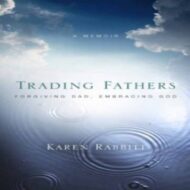In 1968, in the Mexico City Olympics, Tommie Smith won the
200 meter gold. He was the first man in Olympic history to run it in
record-breaking time for the medal. He is still the only track and field
athlete to hold eleven world records simultaneously. I didn’t know that until I
read his autobiography. All I knew was what I’d seen on T.V. I was a teenager
in the Midwest, watching as he ascended the victory
platform with his bronze medal-winning teammate, John Carlos. During the
national anthem, they raised their black-gloved fists, creating an enduring
image of the quest for dignity for every person.
In his book, Silent
Gesture, Dr. Smith describes the prices he’s paid and continues to pay for
that single act. At the end of the book, in the acknowledgments, he writes:
“First and Foremost: to my Heavenly Father who chose me to be a
vessel in this season, thank you for giving me the opportunity, the strength,
and the knowledge to Stand Up for Peace, Love, and Equality for ALL.” (1)
The story goes in many directions: the costs of the gesture,
the social consequences, the history, the courage, the kind of man he was. He
says his head was down while his fist was raised because he was praying. He
feared for his life.
One act never tells the whole story. When a friend doesn’t
call, maybe they feel rejected. When we glance out the backyard window and see
one child tugging on the other’s toy, perhaps we need to hear more before we
jump to conclusions. If a person of a different ethnicity does something we
don’t understand, perhaps its time to listen, and learn.
Jesus on the cross was God’s nearly silent gesture. That
image, too, leads in many directions: the costs, the consequences, the history,
the courage, the nature of Jesus and of God. There’s always more to understand.
Jesus, thank you that there is always more. And thank you for those who have contended for dignity
for all and most especially, for your sacrifice, which confers dignity on all.
(1) pg. 259, Silent Gesture, Tommie Smith with David Steele, Temple University Press, 2007
